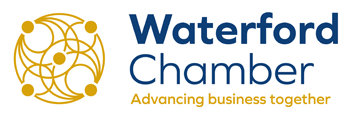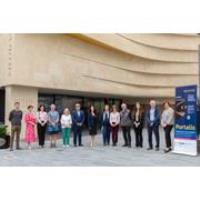
An exciting new cross-border permanent visitor experience exploring the life of our earliest settlers has opened at Waterford Treasures Museums, featuring an inclusive display of excavated Mesolithic artefacts.
Researchers from the transdisciplinary pilot research project Portalis (meaning ‘Gateway’), working with six coastal communities, have been exploring the earliest connections between Ireland and Wales dating back to 10,000 years ago. Project findings and stone tools from the Waterford Estuary area are included in this exhibition, including artefacts collected by the late citizen archaeologist Noel McDonagh, featured here for the first time.
The Portalis project owes its origin to Noel McDonagh, and the key experts McDonagh engaged with, notably Prof Peter Woodman, Prof Stanton Green, and Dr Joseph Schuldenrein, and the subsequent voluntary work of the Creaden Waterford Estuary Steering Group along with the great support of its local coastal communities in Ireland and Wales.
McDonagh dedicated some fifty years of his life to investigating the Creadan area surface collecting some 6,000 artefacts. In 2016 a licenced test archaeological excavation on Creadan Head by Prof Peter Woodman, working with Noel and local volunteers, identified Creadan as the first definite Early Mesolithic site in Waterford.
As part of the Portalis project, researchers have examined the natural and cultural heritage and related contemporary challenges of local coastal communities going back to the Mesolithic Age. New research from Portalis shows Mesolithic people settled on higher terrains, such as Creaden Head, due to rising sea levels, with evidence discovered of their occupation on the surviving high ground and on lower terrain that is currently submerged by rising seas. Research also indicates that Mesolithic peoples may also have occupied terrain tens of kilometres east of the present shoreline at Creaden Head. In Ireland, archaeologists, geoarchaeologists, climatologists, botanists, geologists from Geoarchaeology Research Associates together with South East Technological University (SETU) designers have interpreted this new data into an accessible display at Waterford Treasures Museums.
“We now know that Waterford was one of the first places in Ireland to be settled by humans, about 7,700 BC, and we display some of the stone tools in this bijou exhibition. Further study of the collections of artefacts from this area will tell us a lot more," said Rosemary Ryan, Acting Curator/Manager at Waterford Treasures Museums.
In Wales, Ceredigion Museum, Aberystwyth has also opened a sister display, with both museums and coastal destinations now linked by the project’s new cross-border cultural network and the pilot Portalis Augmented Reality (AR) App.
Speaking at the official launch of the visitor experience on Thursday 27 July Katherine Collins, Waterford Cultural Quarter Project Manager for Waterford City & County Council, said “this wonderful permanent visitor experience is key to engaging the public through showcasing the heritage of our coastlines, here in Waterford and in the Ceredigion region in Wales. There is great cultural and creative significance in having the exhibition available to visitors and locals. One of the important outcomes of the Portalis project is how it has informed us and made us more aware of the story of human settlement in Waterford and indeed Ireland.”
The launch of the Portalis permanent visitor experiences at both museums, highlights a wide range of related sustainable tourism initiatives happening in both countries.
Commenting on its significance, Joy Rooney, Portalis Senior Responsible Officer and Design Lead, Lecturer and Researcher in Design, SETU, said “This permanent new resource for our six coastal communities and their visitors helps tell the story of our uniquely significant new data and will help raise awareness of and interest in protecting our coastal cultural and natural heritage in the challenging times ahead. SETU are developing further funding pathways to help ensure pilot project outputs are sustainable and underpinned by further research.”
The Portalis project, €1.95m, is supported with €1.5m funding from the European Regional Development Fund through the Ireland Wales Cooperation Programme, www.irelandwales.eu The project is led by South East Technological University, (SETU) and is supported by the University of Wales Trinity Saint David, Ceredigion County Council and Waterford Chamber of Commerce.
Entry to ‘The Story of Human Settlement in Waterford’ at Waterford Treasures Museums is free, with no prior booking required.



